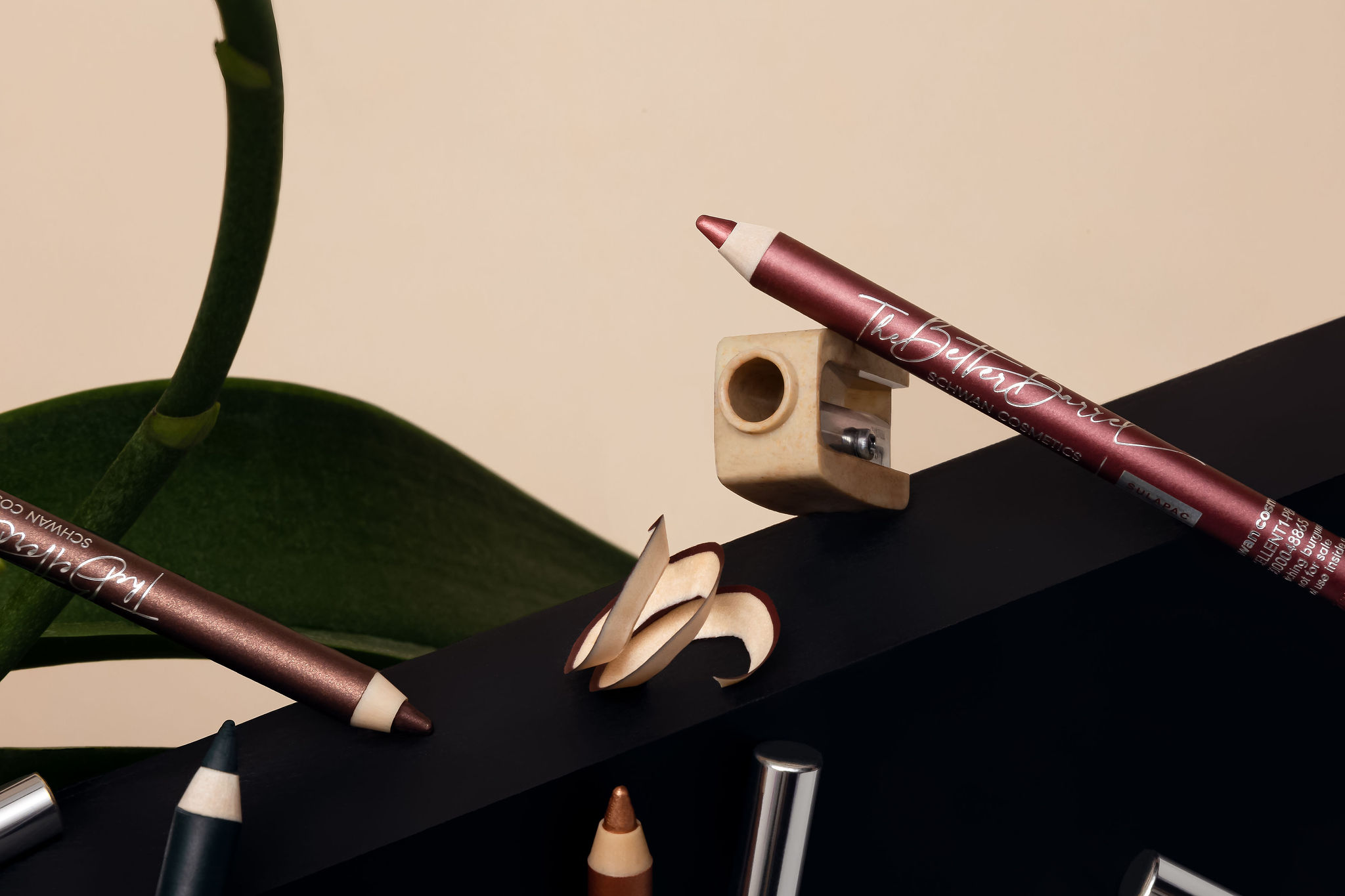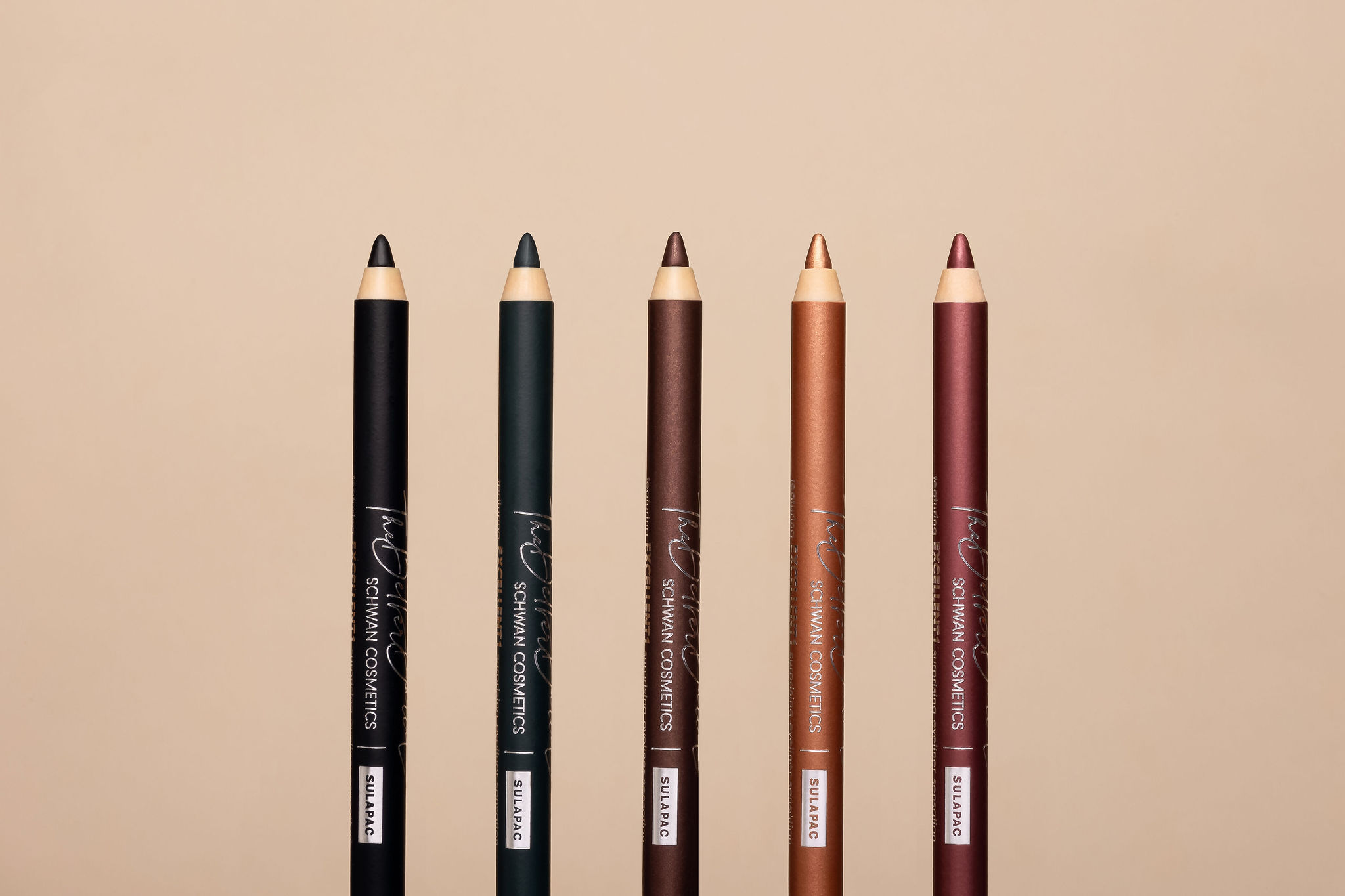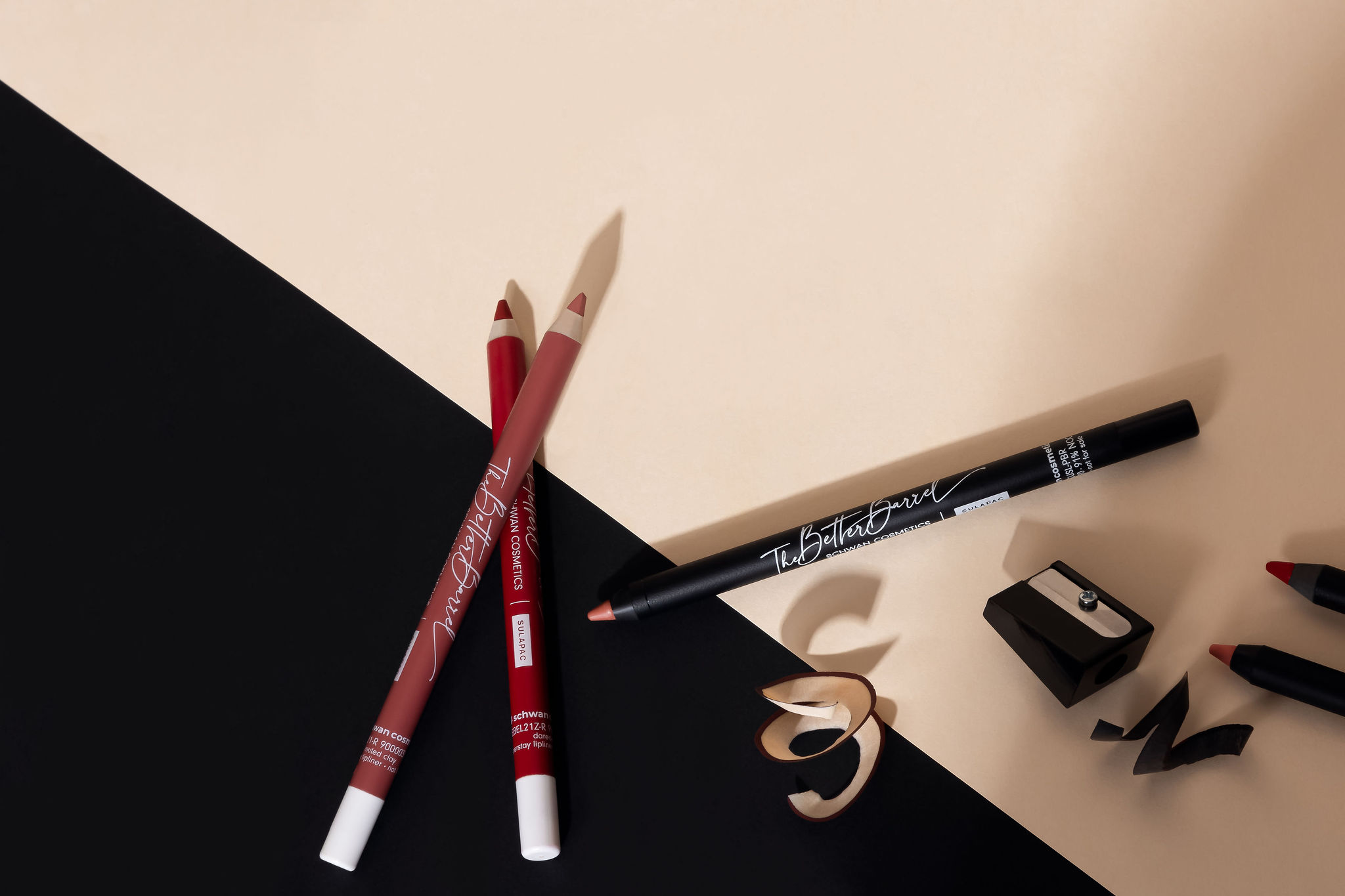What’s your makeup pencil made of? Here’s why Sulapac Flow 1.8 outperforms PVC, AES, ABS, and wood
If you use makeup, chances are your handbag, makeup kit, or bathroom drawer contains at least one makeup pencil. Maybe an eyeliner, brow pencil, lip liner, or another favorite. But have you ever thought about what the pencil is actually made of? With sustainability becoming a defining factor in beauty, the materials behind these products are under increasing scrutiny. And consumers expect brands to have better answers.

Why your makeup pencil belongs in the sustainable beauty conversation
Sustainable beauty refers to cosmetic products and practices that minimize environmental impact. This includes the entire product lifecycle, from ingredient sourcing and material use to manufacturing, distribution, and disposal. It also means committing to social responsibility and transparency across the value chain.
Cosmetic packaging plays a critical role in sustainable beauty. While formulas and ingredients often get the spotlight, the materials used to package and apply products, such as makeup pencil barrels (the part you hold, sharpen, and that protects the makeup inside), matter just as much.
The hidden environmental impact of your makeup pencil
Cosmetic pencils may be small, but with millions produced each year, their environmental impact is significant. Their compact size, convenience, and versatility have made them a go-to beauty product for most makeup consumers. No wonder the market is thriving, projected to reach USD 5 billion by 2031. In other words, the material of the cosmetic pencil matters.
To date, one of the biggest challenges with bio-based materials in cosmetic pencil barrels has been performance. Environmentally friendly alternatives have often failed to preserve the freshness and stability of the makeup inside. That’s why most pencils on the market are still encased in virgin plastic.
In this blog post, we break down the most common materials used in cosmetic pencils—PVC, AES, ABS, and wood—and explain why Sulapac Flow 1.8 is setting a new industry benchmark.

PVC: affordable, but environmentally outdated
PVC (polyvinyl chloride) is a low-cost and widely used material for cosmetic pencil barrels. But its environmental drawbacks are hard to ignore: a plastic cosmetic pencil releases microplastic particles into the environment every time you sharpen it.
Some of the main concerns associated with PVC include:
❌ Made from fossil fuels
❌ Releases hydrochloric acid, a corrosive and harmful substance, when incinerated
❌ Can be corrosive to production equipment
❌ Difficult to recycle and non-biodegradable
❌ Releases microplastics both during use and disposal
In short: PVC is a no-go for brands that care about the planet and their own value chain.
AES: high performance with hidden trade-offs
AES (acrylonitrile ethylene styrene) is favored by many premium brands for its excellent compatibility with advanced cosmetic formulations and its smooth appearance. However:
❌ AES is a styrene-based plastic, derived from oil
❌ Styrene is listed as a hazardous air pollutant by the U.S. Environmental Protection Agency
❌ Like other fossil-based plastics, AES contributes to microplastic pollution, particularly during use and end-of-life
AES remains a common material in cosmetics, but its environmental impact makes it a less future-proof choice.
Wood: a natural material with mixed results
Wooden cosmetic pencils have a more sustainable image. When made from FSC-certified, locally sourced wood, they can be a decent option. However, when it comes to production, wood has its challenges:
⚠️ Sustainability depends on where and how the wood is sourced and transported
⚠️ Limited compatibility with modern high-performance makeup formulations
⚠️ Significant material loss during production
⚠️ In the production process, two halves are typically glued together, so the composition of the adhesive matters
Wood may seem like a sustainable choice, but it doesn’t always deliver the environmental discretion and performance needed.
End-of-life: what happens when the makeup pencil is used up?
One critical issue is what happens to the cosmetic pencil after use. Makeup users rarely use the entire pencil, so the leftover part is almost always thrown away. This makes end-of-life impact a real concern.
Unlike most beauty packaging, cosmetic pencils aren’t considered packaging under the Packaging and Packaging Waste Regulation (PPWR). This means:
- There’s no recycling requirement
- Most end up in landfill or incineration
- Plastic barrels can release microplastics, contributing to long-term environmental pollution
These end-of-life challenges can be addressed with a smarter material choice—one that aligns with both performance and sustainability goals.

Sulapac Flow 1.8: the sustainable makeup pencil material that delivers
Sulapac Flow 1.8 is an extrusion material developed to address the shortcomings of traditional cosmetic pencil materials without compromising on performance or aesthetics. Here’s what makes Sulapac Flow 1.8 a smarter choice for beauty brands:
✅ Bio-based and biodegradable, available with recycled content
✅ Contains FSC-certified side-stream wood flour
✅ Leaves no permanent microplastics or harmful residues behind
✅ Low-carbon, no toxic residues left behind
✅ Compatible with even the most advanced formulations
✅ Excellent sharpenability, a detail that matters to all users
✅ Can be decorated like conventional plastic
✅ Price-competitive with AES
✅ Already the choice of many global brands
For end users, it looks and feels just like conventional plastic. For manufacturers, it’s a drop-in solution that can be processed using existing plastic extrusion equipment.
“If you’re wondering whether you’d notice the difference between a Sulapac cosmetic pencil and a conventional plastic one, the answer is, you won’t. And that’s exactly the point,” says Katja Ahonen, International Key Account Manager for Cosmetics at Sulapac.
A global shift toward sustainable beauty, one pencil at a time
As regulations tighten and awareness around microplastics increases, more brands are turning to alternatives with lower environmental footprint. At the same time, consumer expectations are evolving, particularly among Millennial and Gen Z consumers, who are increasingly drawn to ecological materials.
This opens the door for innovations like Sulapac Flow 1.8, as companies seek to future-proof their product lines, respond to consumer demand, and stay ahead of regulation.
“We want to replace oil-based plastic in sharpenable cosmetic pencils globally,” says Colin Strobant, Commercial Director for Cosmetics at Sulapac. “The transition is already taking place in Europe, with the U.S. following suit.”
Schwan Cosmetics brought bio-based Sulapac cosmetic pencils to the world stage
Schwan Cosmetics, a global leader in color cosmetics, was the first to introduce sharpenable color cosmetic pencils made with Sulapac material in 2022. Until then, bio-based barrels often failed to protect high-performance makeup, but this collaboration has proved that brands don’t have to compromise to be more sustainable. It has also shown how large-scale manufacturers can lead by example and set new standards for material innovation in the beauty industry.
Meet us at Luxe Pack Monaco
Are you a beauty brand looking for a more sustainable cosmetic pencil material? Meet our cosmetics team at Luxe Pack Monaco from September 29 to October 1 and explore the Sulapac Flow 1.8 extrusion material in person. Or reach out today to start an effortless transition to sustainable beauty.
Sulapac Ltd is an award-winning material innovation company addressing the global plastic crisis. By replacing conventional plastic with sustainable, beautiful, and functional Sulapac materials, companies can reduce their carbon footprint, eliminate microplastic pollution, and advance the circular economy. Founded by three scientists in 2016, the Helsinki-based company serves customers across various industries on three continents. Investors behind Sulapac®, the patented material innovation, include CHANEL, Lifeline Ventures, and Sky Ocean Ventures.